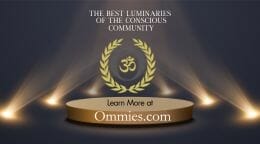How to Hardwire Resilience into the Brain

Absorb it
You can increase the absorption of an experience in three ways:
- Intend to receive it. Consciously choose to take in the experience.
- Sense it sinking into you. You could imagine that the experience is like a warm, soothing balm or a jewel being placed in the treasure chest of your heart. Give over to it, allowing it to become a part of you.
- Reward yourself. Tune into whatever is pleasurable, reassuring, helpful, or hopeful about the experience. Doing this will tend to increase the activity of two neurotransmitter systems—dopamine and norepinephrine—that will flag the experience as a “keeper” for long-term storage.
This is not about holding on to experiences. The stream of consciousness is constantly changing, so trying to cling to anything in it is both doomed and painful. But you cangently encourage whatever is beneficial to arise and stick around and sink in—even as you are letting go of it. Happiness is like a beautiful wild animal watching from the edge of a forest. If you try to grab it, it will run away. But if you sit by your campfire and add some sticks to it, happiness will come to you, and stay.
Link it
In Linking, you are simply conscious of both “negative” and “positive” material at the same time. For example, off to the side of awareness could be old feelings of being left out and unwanted (perhaps from a rocky childhood) while in the foreground of awareness are feelings of being liked and included by people at work. The brain naturally associates things together, so if you keep the positive material more prominent and intense in awareness, it will tend to soothe, ease, and even gradually replace the negative material.
It helps to use positive material that is matched in some way to the negative material. To identify the specific psychological resources that will be especially effective with particular issues, I use the framework of the three basic human needs.
For example, challenges to safety are often indicated by a sense of anxiety, anger, powerlessness, or trauma—and a sense of calm or grit can really help with these. Challenges to our need for satisfaction are frequently experienced as frustration, disappointment, drivenness, addiction, blahness, or boredom. Feeling thankful, awestruck, or already contented are well-matched to these issues. Challenges to connection can be experienced as loneliness, resentment, or inadequacy—and feeling either caring or cared about is a wonderful relief, since love is love whether it is flowing in or out.
To link, you can start with something positive, such as the sense of a key resource. While having that experience, you can bring to mind some negative material for which it would be good medicine. Or, you can start with something that is uncomfortable, stressful, or harmful, such as a lot of anxiety before giving a presentation. After letting your feelings be as long as you like and then letting go of them, you find positive material to replace what you released, such as a sense of calm from knowing that people are actually interested in hearing what you have to say.
If you get pulled into the negative, drop it and focus only on the positive. And remember that this step is optional: If the challenge you’re facing is too powerful, you can grow mental resources for addressing it through the first three HEAL steps alone.
A Core of Happiness
Going on a dangerous hike, we know that we need to bring food and other supplies. The same is true when traveling the road of life. We need psychological supplies, such as courage and generosity, in our neural resilience “backpack.”
To fill up your resilience backpack, be mindful of which particular need—safety, satisfaction, or connection—is at stake in the challenges of your life. Deliberately call upon your inner strengths related to meeting that need. Then, as you experience mental resources, you can reinforce them in your nervous system.
As you grow these strengths and increase your resilience, you will feel less anxiety and irritation, less disappointment and frustration, and less loneliness, hurt, and resentment. And when the waves of life come at you, you’ll meet them with more peace, contentment, and love at the core of your being.
This article originally appeared on Greater Good, the online magazine of the Greater Good Science Center (GGSC).
You will also enjoy Time for an Intuition Tune Up
About the Author
Based at UC Berkeley, the GGSC studies the psychology, sociology, and neuroscience of well-being, and teaches skills that foster a thriving, resilient, and compassionate society. Rick Hanson, Ph.D., is a psychologist, senior fellow of the Greater Good Science Center at UC Berkeley, and New York Times best-selling author. He’s been an invited speaker at NASA, Oxford, Stanford, Harvard, and other major universities, and taught in meditation centers worldwide. Forrest Hanson is a writer, business consultant, and editor of Eusophi. A UC Berkeley graduate focusing on political linguistics and social theory, he has worked in one of the world’s leading PR firms.
OMTimes Magazine is one of the leading on-line content providers of positivity, wellness and personal empowerment. OMTimes Magazine - Co-Creating a More Conscious Reality





